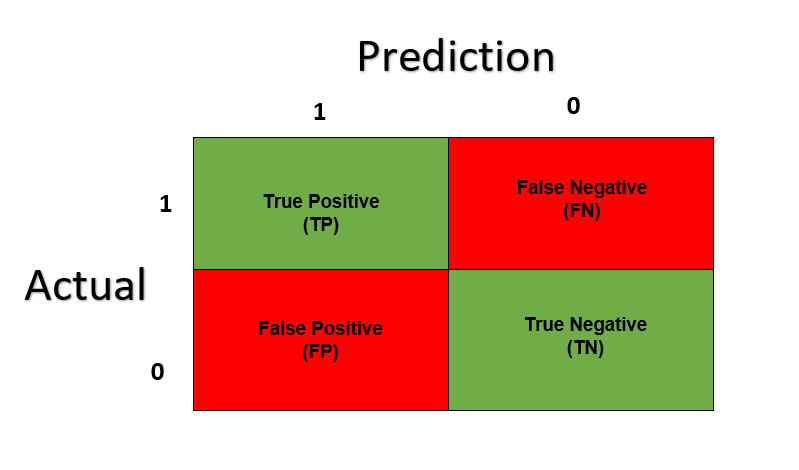Cyber Security And Confusion Matrix
 Nehal Ingole
Nehal Ingole
Hello Everyone
In this article we will discuss what role does Confusion Matrix plays in the Cybersecurity field??
As we all know that cybersecurity is very important as they are responsible for our security from cybercrime and the tools and tech they use are very important for them and what if I say that the tool that they use can give them wrong information !! If this happens that worst-case scenario may occur.
so before we start with that topic let's discuss what confusion matrix is and what is cybersecurity?
What is Cyber Security?
Cybersecurity is the practice of protecting systems, networks, and programs from digital attacks, here digital attacks can be stealing information or spying on another system, and much more. There are cybersecurity experts present whose work is to protect users or prevent the digital attack, here digital attack is also known as cybercrime.
Cyber Crimes are increasing day by day, here is some example of cybercrime that took place in 2021 and this will give you the idea that how important is cybersecurity :
Australian broadcaster Channel Nine was hit by a cyberattack on 28th March 2021, which rendered the channel unable to air its Sunday news bulletin and several other shows.
In March 2021, the London-based Harris Federation suffered a ransomware attack and was forced to “temporarily” disable the devices and email systems of all the 50 secondary and primary academies it manages. This resulted in over 37,000 students being unable to access their coursework and correspondence.
A cybercriminal attempted to poison the water supply in Florida and managed by increasing the amount of sodium hydroxide to a potentially dangerous level.
Acer suffered a ransomware attack and was asked to pay a ransom of $50 million, which made the record of the largest known ransom to date
By going through the cyber crimes that happened in 2021, we can understand that how important is cybersecurity.
What is Confusion Matrix?
Confusion Matrix is a concept that is used to find the accuracy of the model that we create in Machine learning or we can explain it as a table that is often used to describe the performance of a classification model on a set of test data for which the true values are known.
The basic terms that the Confusion matrix has are:
True Positive [ TP ]: In TP, the Machine Learning model predicted right and it was actually right.
True Negative [ TN ]: In TN, the Machine Learning model predicted right but actually it was the wrong prediction, also called False alarm.
False Positive [ FP ]: In FP, the model predicts the wrong but actually it was right
False Negative [FN ]: In FN, the model predicted wrong and actually it as wrong.

There are two types of error in the confusion matrix:
False Negative and
False Positive
The most dangerous error is the False Positive [FP] error as the machine predicted false but it was not false it was true. For example, the machine predicted student fails but actually student was a pass.
This error causes problems in the cybersecurity world where the tools used are based on machine learning or ai, it may give a False Negative error that may cause dangerous impacts.
Therefore the role of the confusion matrix is important in the field of machine learning.
Cyber Attack Detection and Classification using Parallel Support Vector Machine
Support Vector Machines (SVM) are the classifiers that were originally designed for binary c1assification. The c1assificatioin applications can solve multi-class problems. The result shows that pSVM gives more detection accuracy for classes and comparable to the false alarm rate.
Cyberattack detection is a classification problem, in which we classify the normal pattern from the abnormal pattern (attack) of the system.
The SDF is a very powerful and popular data mining algorithm for decision-making and classification problems. It has been using in many real-life applications like medical diagnosis, radar signal classification, weather prediction, credit approval, and fraud detection, etc.
A parallel Support Vector Machine (pSVM) algorithm was proposed for the detection and classification of cyber attack datasets.
The performance of the support vector machine is greatly dependent on the kernel function used by SVM. Therefore, we modified the Gaussian kernel function in a data-dependent way in order to improve the efficiency of the classifiers. The relative results of both the classifiers are also obtained to ascertain the theoretical aspects. The analysis is also taken up to show that PSVM performs better than SDF.
The classification accuracy of PSVM remarkably improve (accuracy for Normal class as well as DOS class is almost 100%) and comparable to false alarm rate and training, testing times.
Conclusion
In the realm of cybersecurity, where the stakes are high and the consequences of errors can be catastrophic, the role of tools like the Confusion Matrix cannot be overstated. As cybercrime continues to evolve and become increasingly sophisticated, the need for accurate and reliable detection and classification methods is more critical than ever.
The Confusion Matrix serves as a fundamental tool in assessing the performance of machine learning models, particularly in the context of cyber attack detection and classification. By providing a clear breakdown of true positives, true negatives, false positives, and false negatives, it offers valuable insights into the strengths and weaknesses of these models.
Moreover, the application of advanced techniques like Support Vector Machines (SVM) and parallel SVM algorithms underscores the ongoing efforts to enhance the effectiveness and efficiency of cybersecurity measures. These algorithms, with their ability to discern normal patterns from abnormal ones, play a pivotal role in safeguarding systems and networks from malicious activities.
Through careful analysis and modification of kernel functions, researchers aim to optimize the performance of these classifiers, thereby improving their accuracy and reducing false alarm rates. The promising results obtained from experiments demonstrate the potential of these methodologies to bolster cybersecurity defenses.
In conclusion, as cyber threats continue to proliferate, the integration of robust machine learning techniques coupled with the meticulous evaluation facilitated by tools like the Confusion Matrix is essential for staying ahead of malicious actors and protecting critical digital assets. By leveraging the power of data-driven insights and innovative algorithms, the cybersecurity community can fortify its defenses and mitigate the risks posed by evolving cyber threats.
Connect with us:
Hashnode: https://hashnode.com/@Nehal71
Twitter : https://twitter.com/IngoleNehal
Subscribe to my newsletter
Read articles from Nehal Ingole directly inside your inbox. Subscribe to the newsletter, and don't miss out.
Written by

Nehal Ingole
Nehal Ingole
🚀 Greetings World! 🌐 Meet a dynamic Frontend Developer, UI/UX Designer, and avid explorer of Cloud & DevOps realms! Uncover the journey of a professional deeply passionate about crafting seamless user experiences, designing visually stunning interfaces, and navigating the cloud with a DevOps mindset. 🔧 Skills Snapshot: Frontend Mastery: HTML, CSS, and JavaScript expert, specializing in React, Angular, and Vue.js. Design Wizardry: Proficient in wireframing, prototyping, and Adobe Creative Suite and Figma for captivating designs. Cloud Maestro: Fluent in AWS, Azure, and Google Cloud Platform, adept at architecting scalable solutions. DevOps Guru: Skilled in Docker, Kubernetes, Jenkins, and Git, contributing to efficient development workflows. 🔗 Let's Connect: Open to collaborating on exciting projects and sharing industry insights, I invite connections for networking or discussions. Reach out for potential collaborations. 📧 Contact Me: GitHub: GitHub Profile Email: nehalingole2001@gmail.com Mobile: 7397966719 Figma: Figma Profile Twitter: Twitter Profile HashNode: HashNode Profile LinkedIn : LinkedIn Profile
